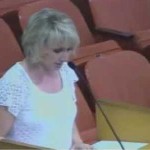And so begins another school year and, with it, even more new guidelines on teacher evaluations. New York State has adopted the Charlotte Danielson Framework for Teaching. Teachers have returned from summer break and have been told that this will be the new standard for evaluating teachers. For the first time last year, students in the state of New York were given Common Core-aligned state exams. They were harder, longer, and given earlier in the school year, soon after spring break. Scores have plummeted throughout the state. These scores are what they are based on the teacher ratings, along with the Danielson Framework.
What is the Danielson Framework
The Danielson Framework is all-encompassing and objective. And because of these traits it is also incredibly in-depth. It contains four domains, divided into twenty-two components, and a rubric for each component. Do you feel overwhelmed yet? Not only do you need to have every student show growth on the state and local exams, but now you need to worry about yourself in twenty-two different components. Each component has a rubric with examples of what to do and what not to do and what artifacts can be used to prove the teacher has completed the component.
The framework divides itself up, and teachers cannot be scored on multiple components at a time. This is a relief in and of itself because how could any administrator carry around and accurately score any person with twenty-two rubrics? In theory, the different components make sense. In reality, no one evaluates anything in life that way. When you walk into any room in any building, you don’t look at any one component; you look at the whole picture. Your natural instinct is to take all of it in, not just the paint color. This framework asks the administrator to look only at one singular component of a teacher, classroom, or lesson plan.
Four Domains of Danielson Framework
The four domains are planning and preparation, classroom environment, instruction, and professional responsibilities.
The first domain, planning and preparation, concentrates on the teacher’s lessons and lesson plans. It essentially grades the teacher on how well she can plan the lesson. This has led some schools to dictate what needs to be in a lesson plan. This can help the teacher avoid a lower rating and achieve success. Lesson plans are no longer notes meant for the teacher’s eyes only. Those little boxes in the plan books in no longer sufficient and would be a cause for failure.
Classroom Environment Domain
Domain two is classroom environment, grades the teacher on the physical classroom, and the attitude found in the classroom. The room needs to be well set up physically, and there must be a learning culture. The teacher needs to manage student behavior. Common sense for anyone who has taught.
Instruction and Professional Responsibilities Domains
The instruction domain covers teacher-student communication, questioning, engagement, assessment, and responsibility. This domain covers the actual teaching. The final domain is professional responsibilities. This includes record keeping, communicating with families, professionalism, and being a part of a professional community. These are all the “extras” that were always expected of teachers but were never part of the evaluations.
The comprehensiveness of this framework makes it both a positive and a negative. It leaves no stone unturned but simultaneously is daunting and overwhelming. It leaves room for any teacher to be successful but simultaneously makes it seem like a teacher needs to be taught like a school child to complete their job successfully. Remember that while this is used to evaluate teachers, this is not the complete picture. Student test scores are still a major component. The framework is just the component that the teacher can control.




